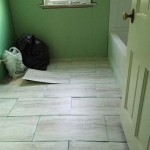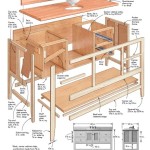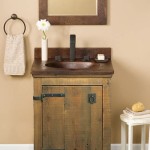Addressing Leaky Pipes Under the Bathroom Sink
Leaky pipes under a bathroom sink are a common household problem that can lead to significant water damage if left unaddressed. These leaks can range from a slow, almost imperceptible drip to a more noticeable stream of water. Regardless of the severity, addressing the issue promptly is crucial to prevent long-term damage to cabinets, flooring, and even the structural integrity of the bathroom. This article provides a detailed overview of the common causes of leaky pipes under the bathroom sink, methods for identifying the source of the leak, and steps to repair or replace the affected components.
Understanding the plumbing configuration under the bathroom sink helps in diagnosing and resolving leaks. The typical setup includes supply lines that bring hot and cold water to the faucet, the drain assembly, which consists of the sink strainer, the tailpiece, the P-trap, and the drainpipe that connects to the main plumbing system. Each of these components is a potential source of leaks due to wear and tear, loose connections, or corrosion.
Identifying the Source of the Leak
Pinpointing the exact location of the leak is the first and most important step in addressing the problem. A systematic approach is necessary to avoid unnecessary repairs and ensure the correct component is addressed. Begin by visually inspecting all visible parts of the plumbing under the sink. Use a flashlight if needed to illuminate hard-to-reach areas.
Start with the supply lines. These flexible tubes connect the shut-off valves on the wall to the faucet. Check for drips or moisture around the connections at both ends of the supply lines. Run your hand along the length of the lines to feel for dampness, which could indicate a leak in the tubing itself. Mineral deposits or corrosion around the connections often indicate a slow, ongoing leak.
Next, inspect the shut-off valves. These valves control the flow of water to the faucet. Look for signs of leaks around the valve stem (the part you turn to shut off the water) and the connections where the valve attaches to the supply lines. If the valve is leaking, it might need tightening or replacement.
The faucet base where it meets the sink is another potential leak source. Water splashing on the countertop can seep down around the faucet base and drip into the cabinet below. Examine the sealant around the base and check for cracks or gaps. If the sealant is compromised, water can easily penetrate.
The drain assembly is a complex system with multiple connections. Start by examining the sink strainer, where the sink drain connects to the tailpiece. Check the nut that connects the strainer to the sink. A loose nut can allow water to seep through. Inspect the rubber gasket under the strainer for signs of wear or damage.
The tailpiece is the section of pipe that connects the sink strainer to the P-trap. Check the connections at both ends of the tailpiece for leaks. The P-trap is a curved section of pipe designed to trap debris and prevent sewer gases from entering the bathroom. Inspect the connections at both ends of the P-trap, as well as the trap itself, for cracks or damage. The drainpipe connects the P-trap to the main drain line in the wall. Check the connection where the P-trap meets the drainpipe for leaks.
If the leak is not immediately apparent, dry all the pipes and connections thoroughly. Then, slowly run water into the sink, one faucet at a time (hot and cold separately), and observe where the first drips appear. This can help isolate the leak to a specific component. If the leak only occurs when the drain is open, the issue lies within the drain assembly.
Repairing Common Leaks
Once the source of the leak has been identified, the appropriate repair can be undertaken. Basic plumbing skills and tools are often sufficient for fixing common leaks under the bathroom sink. However, more complex issues may require the expertise of a professional plumber.
For leaky supply lines, the first step is to shut off the water supply at the shut-off valves. Place a bucket under the sink to catch any residual water. Use a wrench to carefully tighten the connections at both ends of the supply line. Avoid over-tightening, as this can damage the fittings. If tightening the connections does not stop the leak, the supply line may need to be replaced. Replacing a supply line is a relatively straightforward task that involves disconnecting the old line and connecting a new one, ensuring the connections are snug but not over-tightened.
Leaky shut-off valves can sometimes be repaired by tightening the packing nut around the valve stem. The packing nut is a small nut located behind the handle. Use a wrench to gently tighten the nut, but be careful not to over-tighten it. If tightening the packing nut does not stop the leak, the valve may need to be replaced. Replacing a shut-off valve requires shutting off the water supply to the entire house and disconnecting the valve from the plumbing. A new valve can then be installed, ensuring all connections are properly sealed.
Leaks around the faucet base can be addressed by applying a new bead of sealant. Scrape away any old or damaged sealant with a utility knife. Clean the area thoroughly with a damp cloth. Apply a bead of silicone sealant around the base of the faucet where it meets the sink. Smooth the sealant with your finger and allow it to dry completely before using the faucet.
Leaks in the drain assembly often involve loose connections or worn-out washers. Start by disassembling the affected portion of the drain assembly. Place a bucket under the sink to catch any water. Use a wrench to loosen the nuts connecting the various components. Inspect the washers and replace any that are cracked, worn, or damaged. Clean the threads of the pipes and apply pipe joint compound or Teflon tape to ensure a watertight seal. Reassemble the drain assembly, tightening the nuts snugly but not over-tightening them.
If the P-trap itself is cracked or damaged, it will need to be replaced. P-traps are typically made of PVC or metal. Replacing a P-trap involves disconnecting the old trap and installing a new one, ensuring all connections are properly sealed. Make sure the new P-trap is the correct size and configuration for your plumbing.
Preventing Future Leaks
Preventing future leaks under the bathroom sink involves regular maintenance and attentive observation. Periodic inspections can identify potential problems before they escalate into major leaks. Regularly check the supply lines, shut-off valves, and drain assembly for signs of corrosion, wear, or leaks. Tighten any loose connections as needed.
Avoid placing heavy objects under the sink that could put stress on the pipes. This can cause connections to loosen or pipes to crack over time. Be mindful of what you pour down the drain. Avoid pouring grease, oil, or other substances that can clog the drain and put pressure on the plumbing system.
When replacing plumbing components, use high-quality materials that are resistant to corrosion and wear. This can extend the lifespan of the plumbing system and reduce the likelihood of future leaks. Consider hiring a professional plumber for complex plumbing repairs or installations. A professional plumber has the expertise and tools to ensure the job is done correctly and safely.
In areas with hard water, consider installing a water softener. Hard water can cause mineral buildup in pipes and fixtures, leading to corrosion and leaks. A water softener can remove minerals from the water, protecting the plumbing system from damage.
Educating all household members about proper plumbing practices can also help prevent leaks. Simple actions, such as not over-tightening faucet handles or avoiding flushing non-flushable items down the toilet, can contribute to the overall health of the plumbing system.
By understanding the common causes of leaks, implementing preventive measures, and addressing issues promptly, homeowners can minimize the risk of water damage and maintain a healthy and efficient bathroom plumbing system. Regular maintenance and attentive monitoring significantly contribute to preventing costly repairs and ensuring the longevity of the bathroom's plumbing infrastructure.

Bathroom Sink Drain Leaking Around Threads Premier Plumbing Inc

Common Sink Leaks You Could Probably Fix Yourself

How To Fix A Leaking Bathroom Sink Paschal Air Plumbing Electric

How To Fix Or Replace A Leaky Sink Trap Hometips

Bathroom Sink Drain Leaking Around Threads Premier Plumbing Inc

Trap Leaking Under Bathroom Vanity Doityourself Com Community Forums

Hose Under Your Sink Is Leaking Here S What You Have To Do

How To Fix Constant Leak Under Bathroom Bunnings Work Community

Leaking Sink Tailpieces Ehow

Bathroom Sink Drain Leak Not Sure How To Fix Doityourself Com Community Forums
Related Posts







